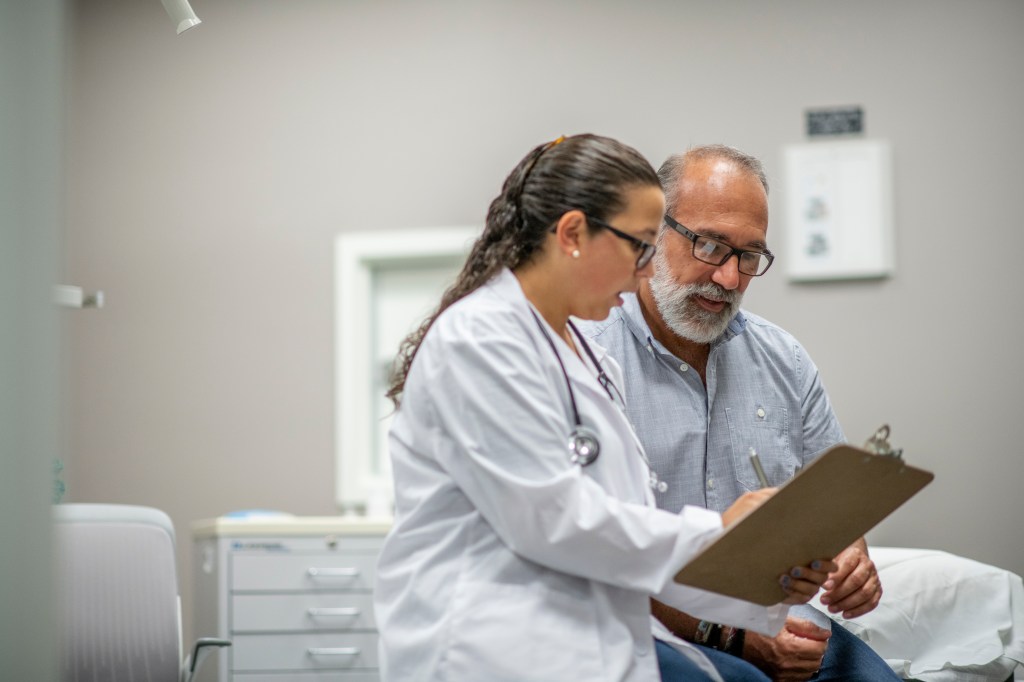
Imagine choosing from among medicines and treatments that made bold claims about managing or curing serious conditions without knowing which could be taken seriously. If drugs and treatments were not studied and held to consistent standards, it would be up to patients to make a guess based on word of mouth, advertising messages, simple observations, and folk wisdom. Thanks to clinical trials, we don’t have to guess.
The clinical trial process, regulated by the U.S. Food and Drug Administration (FDA), is the controlled way that researchers and clinicians study promising treatments – including medicines, therapies, devices, and procedures – on people, with the goal of judging their effectiveness and side effects. A clinical trial is a specific type of clinical research in which humans are studied to see how they respond to a researcher-controlled treatment. Clinical trials result in safer and more effective ways of treating medical conditions.
About clinical trials
Health researchers are always looking for better ways to identify, diagnose, treat, manage, and prevent medical conditions. Whether publicly or privately funded, research often begins with pre-clinical testing, meaning tests done in a laboratory without human participants.
When researchers find a possible treatment, they first test it in computer models, bacterial cultures, and/or on isolated human cells. If the treatment seems to work, the testing usually advances to animals, to learn how it affects them and how it might affect humans. Pre-clinical testing itself may take months or years.
The treatments that make it to clinical trials already have shown promise and a reasonable risk-to-benefit ratio. The standards for entering a clinical trial are so strict that only about five in 5,000 new treatments that begin the road toward clinical trials are approved for human testing by the FDA.
Once a treatment is optimized in the laboratory, a public or private entity (called a sponsor) may apply for an Investigational New Drug (IND) application with the FDA, which authorizes new treatments to enter the health care market. The FDA decides whether it is reasonably safe for the company to move forward with testing the treatment in humans. The clinical trial process usually takes several more years.
By the time a clinical trial is offered as a beneficial treatment option to patients, its potential is clear, and it has been determined to be relatively safe. The plan for a clinical trial must gain approval from the FDA and be overseen by an institutional review board (IRB), a panel of scientists and non-scientists at research institutions.
Depending on their complexity and who is sponsoring the study, clinical trials can be conducted at hospitals, universities, physician offices, and community clinics. Many trials take place at multiple sites, each having a principal investigator. UAB Medicine is able to host many groundbreaking clinical trials due to having the required resources and specialists. This is beneficial to our patients, providers, and researchers. Clinical trials are a critical part of our entire system.
The four phases
Clinical trials advance through three phases to test a treatment, find the appropriate dosage, and look for side effects. After the first three phases, if researchers find a treatment to be safe and effective, the FDA approves it for patient use and continues to monitor its effects in a fourth phase.
- A Phase I trial tests an experimental treatment on a small group of often healthy people (usually numbering 20-80) to judge its safety and side effects and to find the correct drug dosage.
- A Phase II trial involves more people (100-300). While the emphasis in Phase I is on safety, the emphasis in Phase II is on effectiveness. This phase seeks to obtain data on whether the treatment works in people who have a certain disease or condition. These trials also continue to study safety, including short-term side effects.
- A Phase III trial gathers more information about safety and effectiveness, studying different populations and different dosages, and using the treatment in combination with other drugs. The number of participants usually ranges from several hundred to about 3,000 people. If the FDA agrees that the trial results are positive, it will approve the experimental drug or device.
- A Phase IV trial for treatments takes place after the FDA approves their use and is done to monitor for longer-term effects.
Patient participation
Participating in a clinical trial is a way to help advance health care for everyone, and it also may be a way to receive treatments that are not yet available elsewhere. Treatment received as part of clinical trials is often provided at no cost, and participants may even be paid for their time.
However, participants may have to commit to extended periods of time and endure some side effects. Although many steps are taken to limit the risk to participants, it is up to patients to decide if any particular clinical trial is right for them.
Clinical trials offer hope for people whose conditions have no treatment or haven’t responded to the standard treatments. They also offer another way for institutions such as UAB Medicine to change the world.
UAB Medicine participates in hundreds of clinical trials at any given time. Click here to search active clinical trials by type and by keyword.
Sources: National Institutes of Health, clinicaltrials.gov, and cancer.gov
